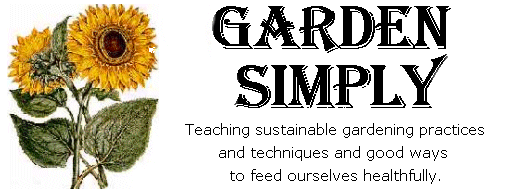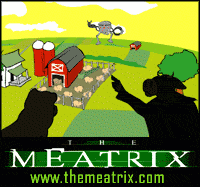
|
| Home | Reading Room | Newsletter | Reminders | Technique | Nursery |
| News | Sustainable Gardening | Trees & Shrubs | Flowers | Composting | Soil |
| Shopping | Tools | Books | How To's | Practical Advice | Children | IPM |
Home
Adding Fruit To Edible LandscapeSmall fruits are often easier to integrate into the landscape than fruit trees. Strawberries are excellent ground covers, often covering the surface much faster than ornamental ground covers. The foliage becomes an attractive red in the fall, and the fruit are a tasty bonus. Select varieties that will not require mulching in the winter as the straw could prove quite distracting in the front yard.Anywhere you can grow azaleas will be equally suitable for blueberries. However, unless you are willing to view bird netting for much of the harvest season, plant enough to share with the birds.
Several Berries Are ShrubsBlackberries, raspberries, or gooseberries could effectively substitute for a shrub border. They will undoubtedly help you get to know the neighborhood children better as the fruit begins to ripen. Grapes trellised along a fence or espaliered on a wall, once established, are a quick-growing, decorative feature. The heavy pruning required can be turned to a positive feature by making grapevine wreaths.For healthy trees and good production, fruit trees require regular pruning and pest control. Peaches and plums can be substituted for small, flowering trees in the landscape, such as dogwood, redbud, star magnolia, or flowering peach. When planting apples or pears, check the mature height of the tree you are considering. The term "dwarf" means that it will be smaller than full size, but it could still be 30 feet tall.
Be Practical When Planning Location for Fruit TreesRemember, on many fruit trees, it is necessary to plant more than one variety to ensure good pollination. Use care in selecting where you put the tree so the fruit will not interfere with mowing the lawn or parking the car. Since trees are a long-term investment, consider how long you will be in the house. Remember that future buyers may consider an ornamental with less maintenance to have more value than a large apple tree.Combining edibles and ornamentals can be a richly rewarding way of gardening and can allow you to pursue those plants you are most interested in growing. Don't let traditional locations and separations of plants put a limit on what you use in your landscape. Experiment and see what works for you.
|
| Reading Room | Trees and Shrubs | Flowers | Composting | Soil | Nursery |
| Shopping | Books | Tools | News | Internet Gardening | Links | Support |
| Vermicomposting | Pest Management | How To's | Practical Advice | Children |
| Home | Newsletter | About Us | Support | Contact |
|
GardenSimply.com | All Rights Reserved 2005 |
|
FREE
Garden Journal!! Join "Garden Notes" and plan for Harvest
Success as you track and record your gardening progress. Your Free Personal
Garden Journal includes printable pages making it easy for you to:
|
|
|
|
|
|
|
|
|
|

|
|
|
|



